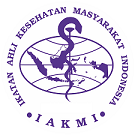The Effect of Unplanned Pregnancy on Postpartum Depression: A Meta-Analysis
Abstract
Background: World data shows that depress
References
Abadiga M (2019). Magnitude and associated factors of postpartum depression among women in Ne kemte town, East Wollega zone, west Ethiopia, 2019: A community-based study. PLoS ONE, 14(11): e0224792. doi: https://doi.org/ 10. 1371/journal. pone-.0224792
Abebe A, Tesfaw G, Mulat H, Hibdye G, Yohannes K (2019). Postpartum depression and associated factors among mothers in Bahir Dar Town, Northwest Ethiopia. Ann Gen Psychiatry, 18:19. https://doi.org/ 10.11-86/s12991-019-0244-4.
Adama ND, Foumane P, Olen JPK, Dohbit JS, Meka ENUM, dan Mboudou E (2015). Prevalence and risk factors of postpartum depression in Yaounde, Cameroon. Open J Obstet Gynecol, 5; 608-617. doi: http://dx.doi.org /10.-4236/ojog.2015.511086.
Ahmad NA, Silim UA, Rosman A, Moha med M, Chan YY, Kasim NM, Yusof M et al. (2018). Postnatal depression and intimate partner violence: a nation-wide clinic based cross-sectional study in Malaysia. BMJ Open, 8:e020-649. doi:10.1136/bmjopen-2017-020-649.
Albert PR (2015). Why is depression more prevalent in women?. J Psychia try Neurosci, 40(4): 219-221. doi: 10.15-03/jpn.150205.
Arifin SRM, Ahmad A, Rasnah A. Rahman, Loh HS, Chong GN (2014). Postpartum depression in Malaysian women: the association with the timing of pregnancy and sense of personal control during childbirth. International Journal of Academic Research, 6(3): 143-149. doi:10.7813/2075 4124 .2014/6-3/B.21.
Asaye MM, Muche HA, Zelalem ED (2020). Prevalence and predictors of post-partum depression: North west Ethiopia. Psychiatry Journal, 2020. doi:-https://doi.org/10. 1155/2020/956 56-78.
Burgut FT, Bener A, Ghuloum S, Sheikh J (2013). A study of postpartum depression and maternal risk fac tors in Qatar. J Psychosom Obs tet Gynaecol. 34(2): 90
Cankaya S (2020). The effect of psycho-social risk factors on postpartum depression in antenatal period: A prospective study. Arch Psychiatr Nurs, 34(3):176-183. doi: 10.1016/ j.apnu.2020.04.007.
Castro de F, Place JMS, Billings DL, Rivera L, Frongillo EA (2014). Risk profiles associated with postnatal depressive symptoms among women in a public sector hospital in Mexico: the role of sociodemo graphic and psychosocial factors. Arch Womens Ment Health, 18(3): 463-71. doi: 10.1007/s00737-014-0472-1.
CEBMa (2014). Critical Appraisal for cross-sectional study. Amsterdam: Center for Evidence Based Mana gement.
Chen L, Ding L, Qi M, Jiang C, Mao XM, Cai WZ (2018). Incidence of and social-demographic and obstetric factors associated with postpartum depression: differences among eth nic Han and Kazak women of North-western China. Peer J, 6: e4335. doi: 10.7717/peerj.4335.
Dadi AF, Miller ER, Mwanri L (2020). Antenatal depression and its asso-ciation with adverse birth out comes in low and middle income countries: A systematic review and meta-analysis. PLoS ONE, 15(1): 1-23. doi: 10.1371/journal.pone .022 7323.
Dlamini LP, Mahanya S, Dlamini SD, Schongwe MC (2019). Prevalence and factors associated with postpartum depression at a primary healthcare facility in Eswatini. Afr J Psychiatry, 25(0). doi: https:// doi.org/10.4102/sajpsychiatry.v2 5i0.1404.
Ferreira M, Catarina C, Bruno B, Jo
Filha MMT, Susan A, Silvana GN da G, Maria do CL (2016). Factors associated with postpartum depressive symptomatology in Brazil: The Birth in Brazil National Research Study, 2011-/2012. J Affect Disord, 194(2016): 159
Hanlon AJM dan Beckmann MM (2015). Mode of birth and early postnatal psychological morbidity. Aust N Z J Obstet Gynaecol, 55: 578
Kadir AA, Daud MNM, Yaacob MJ, Hussain, Nik HN (2009). Relationship between Obstetric Risk Factors and Postnatal Depression in Malaysian Women. Int. Medical J. Malaysia, 16(2): 101-106.
Kerie S, Menberu M, Niguse W (2018). Prevalence and associated factors of postpartum depression in South west, Ethiopia, 2017: a cross-sectional study. BMC Res Notes, 11: 623. doi: https://doi. org/10. 11 86 / s13104-018-3730-x.
Khanlari S, Bryanne BAM, Felix AO, John E (2019). Re-examination of perinatal mental health policy frameworks for women signalling distress on the Edinburgh Post-Natal Depression Scale (EPDS) completed during their ante natal booking-in consultation: a call for population health intervention. BMC Pregnancy and Childbirth, 19(221): 1-11. doi: https://doi.org/ 10.1186/s12884-019-2378-4.
Koutra K, Vassilaki M, Georgiu V, Bitsios P, Kogevinas M, Chatzi L (2016). Preg-nancy, perinatal and post-partum com plications as determinants of postpartum depression: The Rhea mother
Kozinszky Z, Dudas RB, Csarordai S, Devosa I, Toth E, Szabo D, Siko va-nyecz J, et al. (2011). Soc Psychiatr Epidemiol, 46:413-423. doi: 10.10-07/s00127-010-0206-2.
Lara MA, Navarrete L, Nieto L (2016). Prenatal predictors of postpartum depression and postpartum de pres-sive symptoms in Mexican mothers: a longitudinal study. Arch Womens Ment Health,19(5): 825
Madlala SS, Kassier SM (2018). Ante natal and postpartum depression: effects on infant and young child health and feeding practices.South Afr J Clin Nutr, 31(1): 1-7. doi: 10.1080/16 070-658.2017.1333753.
Mughal S, Yusra A, Waquar S (2020). Postpartum Depression. StatPearls Publishing LLC. https://www. ncbi.nlm.nih.gov/books/NBK519070/.
Murti B (2018). Prinsip dan Metode Riset Epidemiologi. Edisi ke 5. Surakarta: Program Studi Ilmu Kesehatan Masyarakat.
Peltzer K, Pengpid S (2018). High prevalence of depressive symptoms in a national sample of adults in Indo-nesia: Childhood adversity, socio-demographic factors and health risk behaviour. Asian J Psychiatr. 33 (2018): 52-59. doi: 10.1016/j. ajp. 20-18.03.017.
Qandil S, Samah J, Stefan W, Simon MC (2016). Postpartum depression in the Occupied Palestinian Territory: a longitudinal study in Bethlehem. BMC Pregnancy Childb. (2016) 16:375, doi: 10.1186/s12884-016-1155-x.
Qandil S, Samah J, Stefan W, Simon MC (2016). Postpartum depression in the Occupied Palestinian Territory: a longitudinal study in Bethlehem. BMC Pregnancy Childb. (2016) 16:375, doi: 10.1186/s12884-016-1155-x.
Stellenberg EM, Abrahams JM (2015). Pre-valence of and factors influen cing postnatal depression in a rural com-munity in South Africa. Afr J Prm Health Care Fam Med, 7(1). doi: http://dx.doi.org/10.4102/ ph-cfm.v7i1.874
Toru T, Chemir F, Anand S (2018). Magnitude of postpartum depress ion and associated factors among women in MizanAman town, Bench Majizone, Southwest Ethiopia. BMC Pregnancy and Childbirth, 18:442. doi: https://-doi.org/10.1186/s12884-018-2072-y.
WFMH (2012). Depression: A Global Crisis. USA. World Federation for Mental Health.
Xiong R, Deng A, Wan B, Liu W (2018). Prevalence and factors associated with postpartum depression in women from single child families. Int J Gynaecol Obstet, 141(2):194-199. doi: 10.1002/ijgo.12461.











